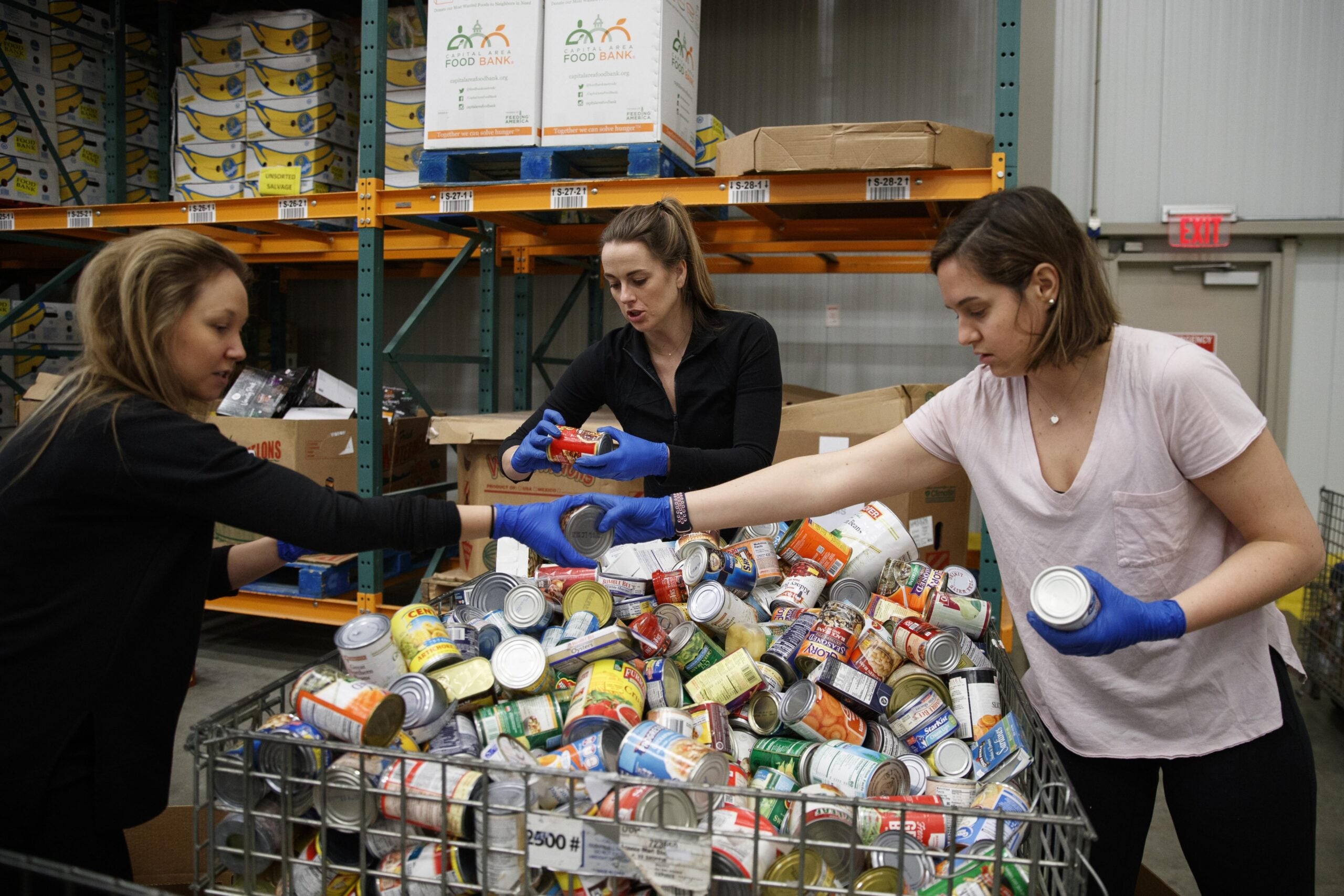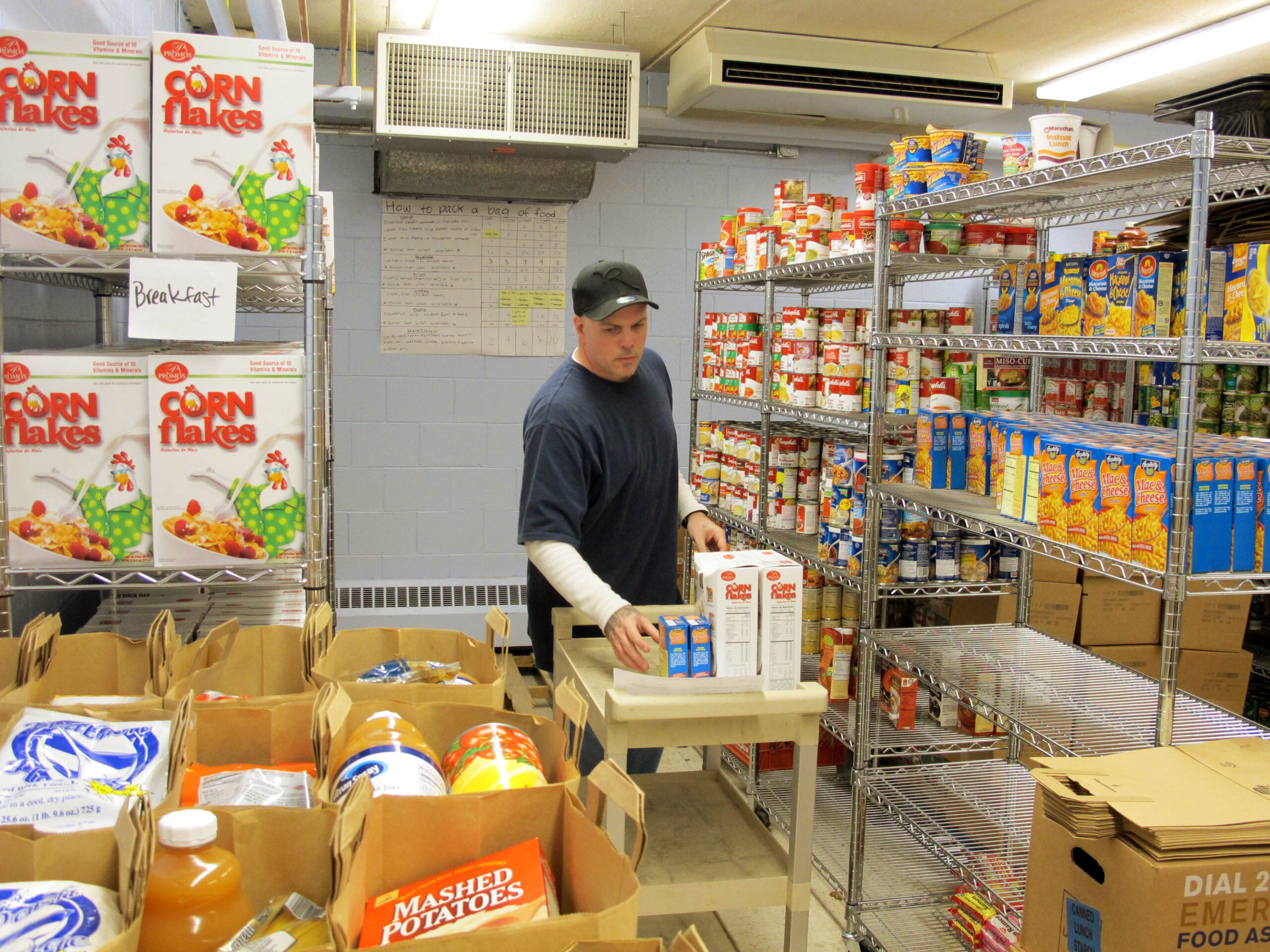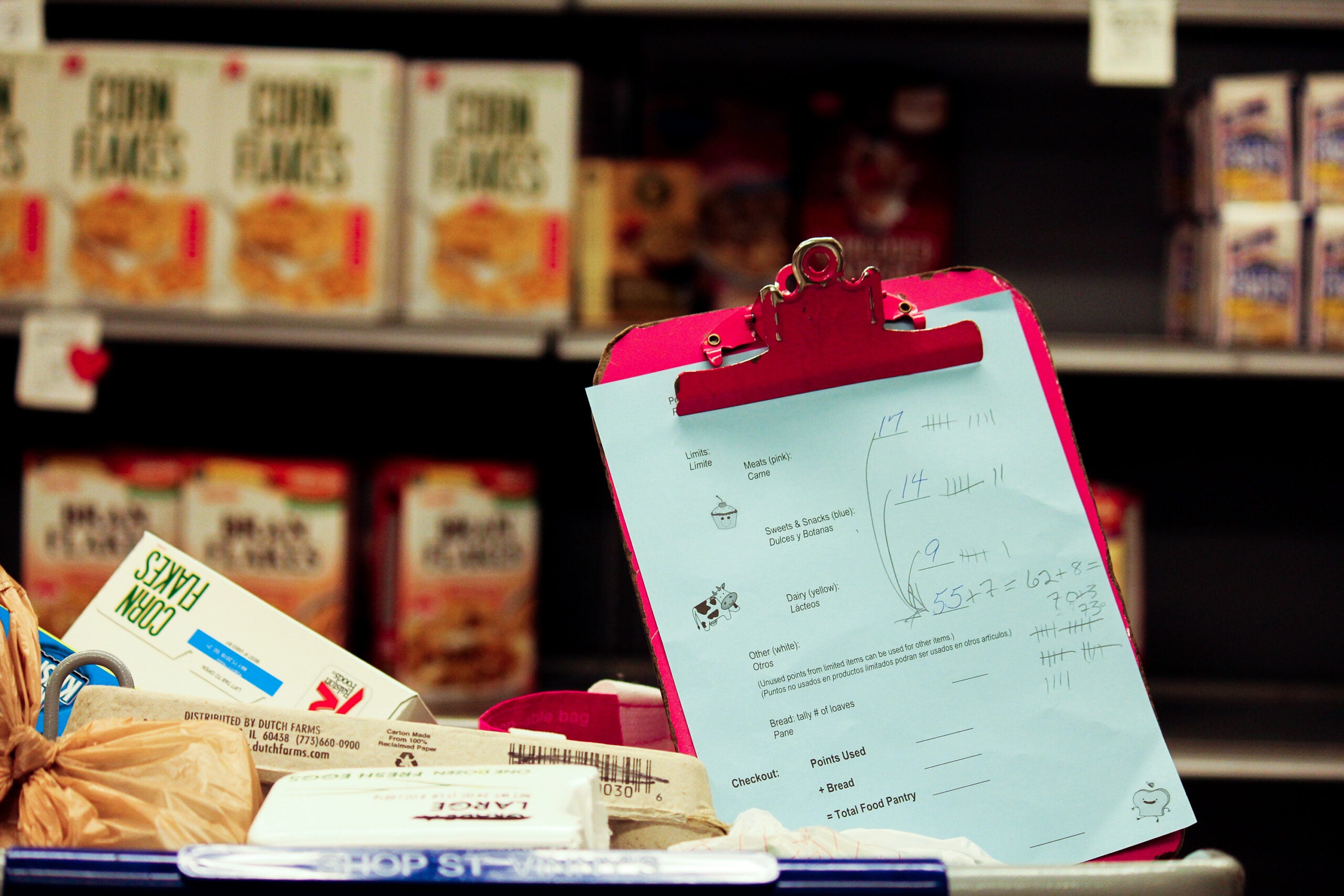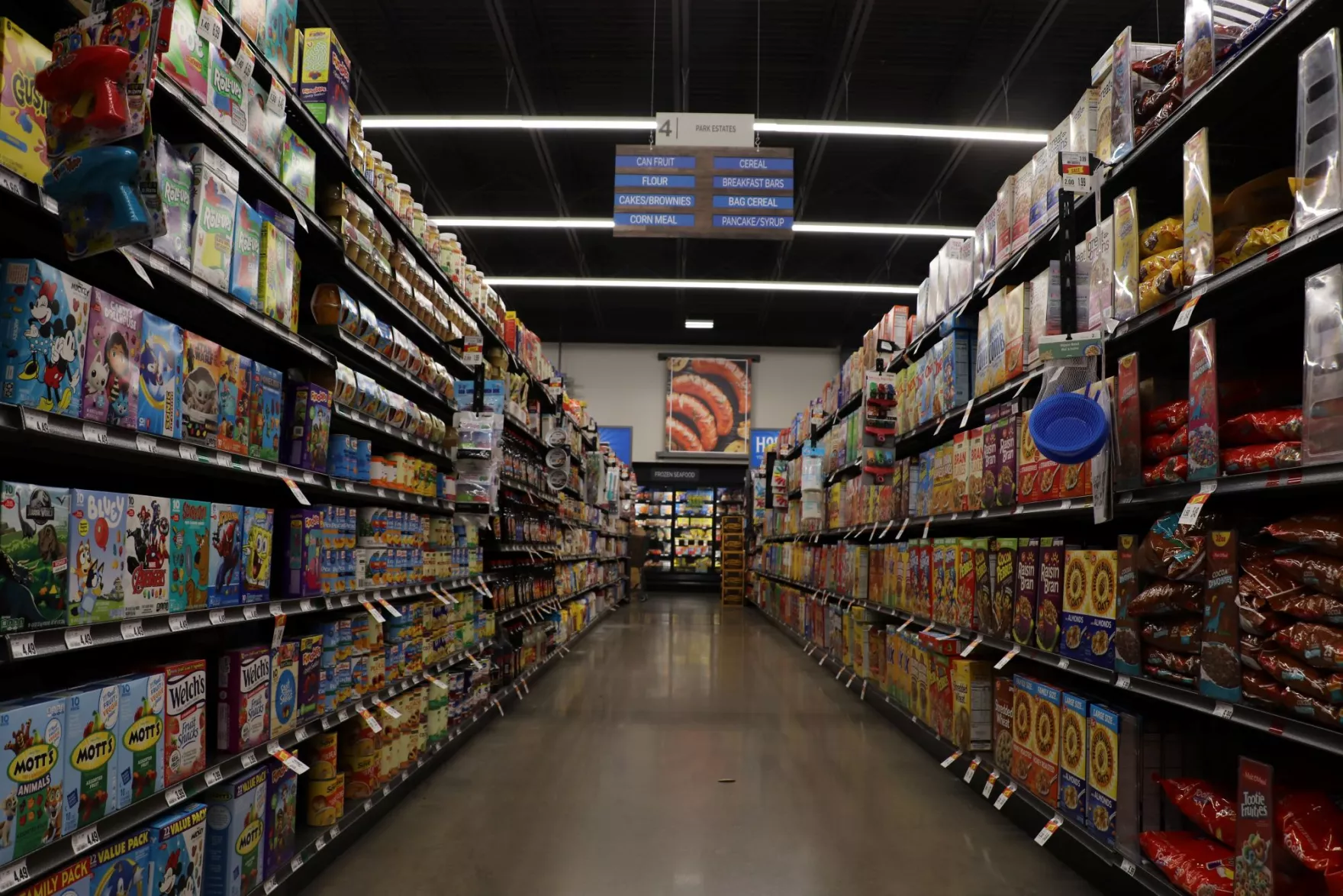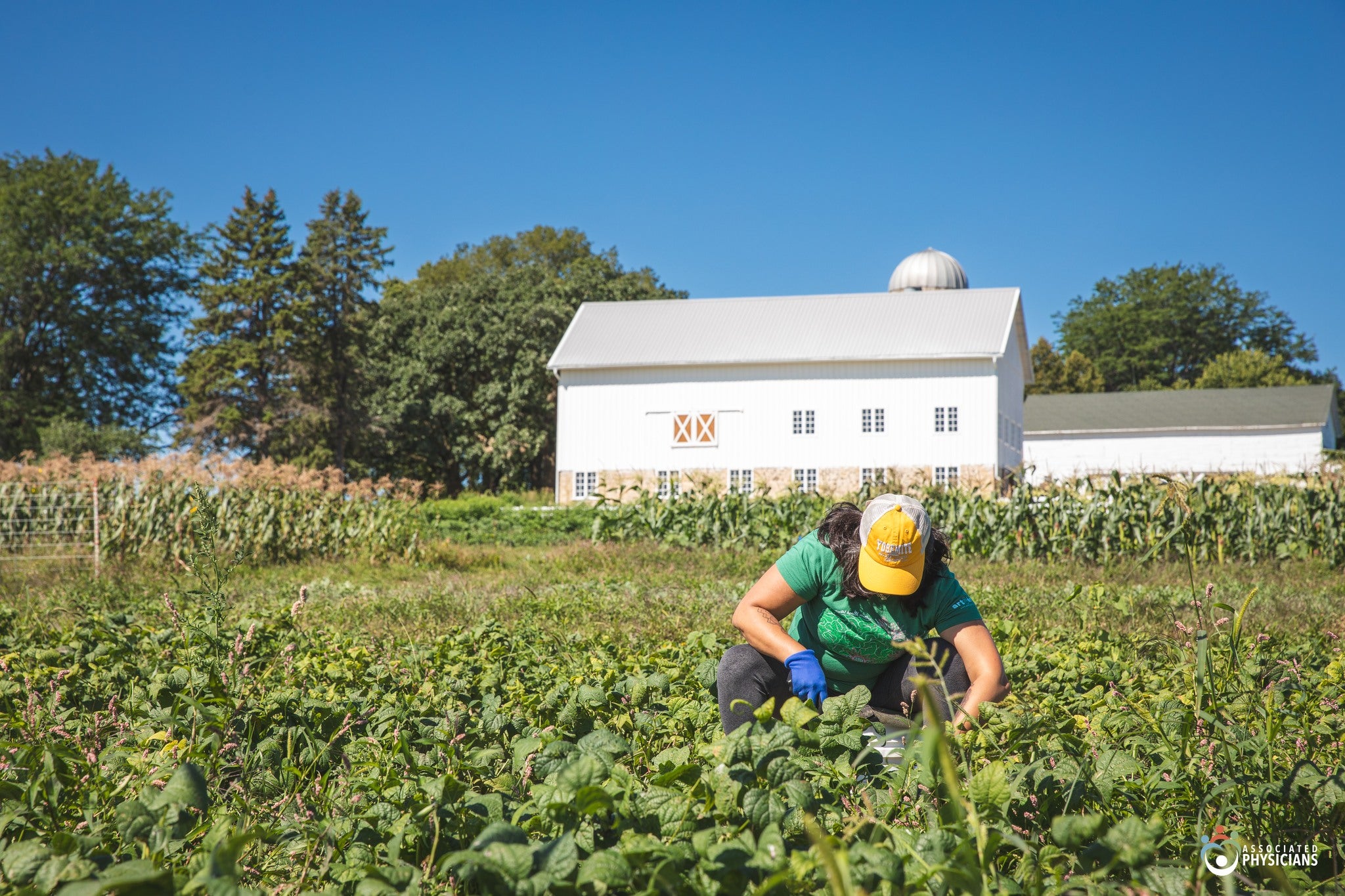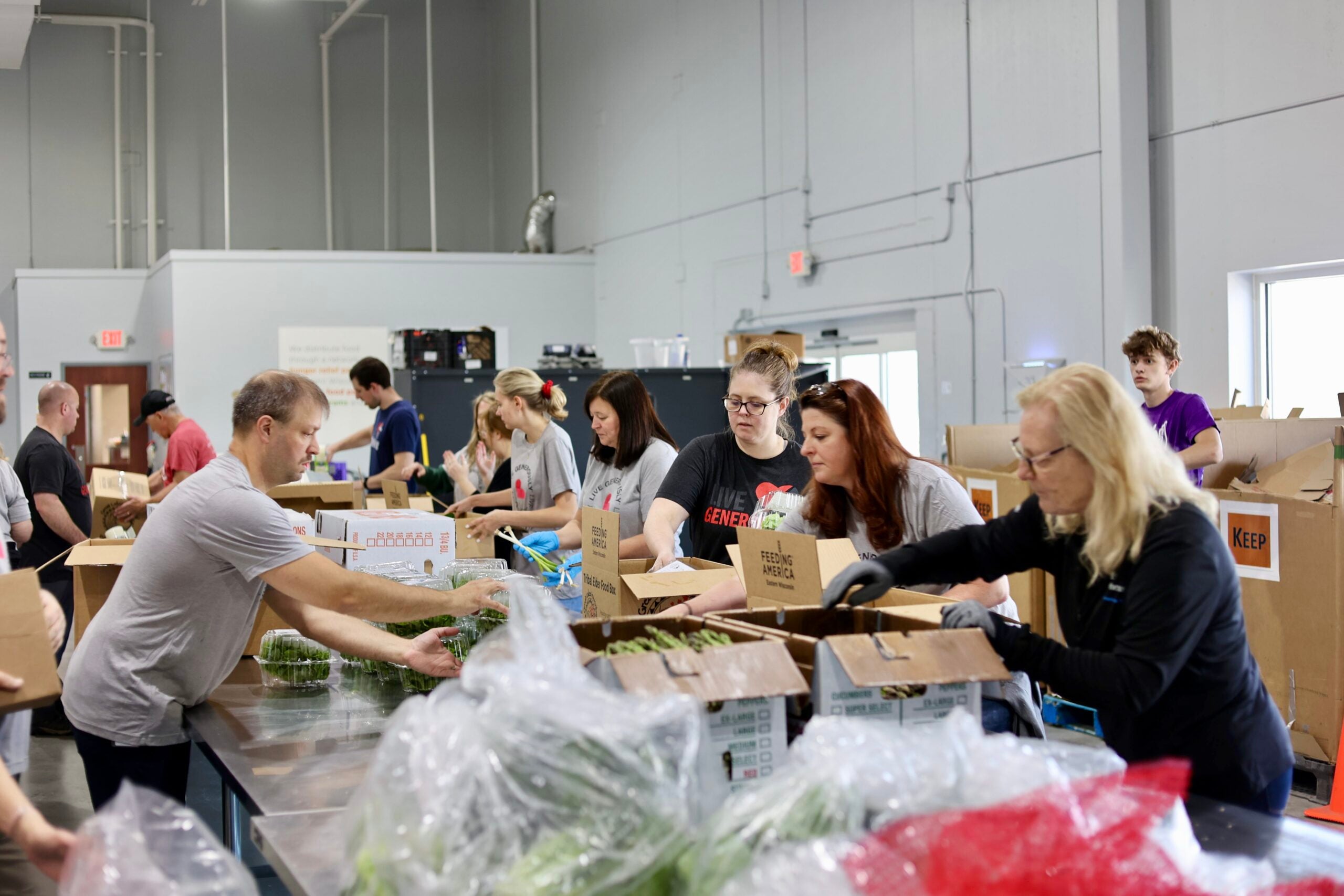In the midst of the COVID-19 pandemic, food banks across Wisconsin are grappling with how to handle a sharp and sudden rise in demand.
The Milwaukee-based food bank Hunger Task Force estimated that in March, demand for its services increased 60 percent. Others have reported increases in demand of up to 100 percent.
Patti Habeck, CEO of Feeding America Eastern Wisconsin, said while food banks have seen spikes in demand before, this outbreak has presented unusual challenges, from the kinds of products that are in demand to how stressed food supply is among distributors.
News with a little more humanity
WPR’s “Wisconsin Today” newsletter keeps you connected to the state you love without feeling overwhelmed. No paywall. No agenda. No corporate filter.
“We’ve been through the 2008 … recession and recovery. We’ve been down that road before. But this is something that’s very, very different,” she said.
Hunger was a major issue in Wisconsin even before COVID-19. According to Feeding America Eastern Wisconsin, 1 in 4 children in the Milwaukee area needed food support. Before the pandemic hit Wisconsin, Habeck said the group was providing food to 400,000 people annually.
But now, Habeck said Feeding America Eastern Wisconsin has had a week in which it distributed more food than it would have during its busiest months pre-pandemic.
The unique situation has forced the organization to get creative in how it gets and distributes food. Previously, it focused on donated food, largely from manufacturers, Habeck said. But the pace of donations has slowed during the pandemic as manufacturers try to keep production up and running safely, while keeping up with retail demand.
“We have turned to very significantly purchasing food,” she said. “We’ve spent more money on purchasing food in the last few months than we have in many, many years put together.”
Habeck said the group has seen a surge in personal giving from individuals, which has been crucial. But she also anticipates financial donations trickling off.
“We expect that the financial donations will kind of come down through the summer as people’s stimulus checks wear off, or as unemployment grinds on a little bit more (and) people will become a little bit more conservative or protective of their personal finances,” she said.
In the meantime, the group has been able to rely on strong connections with community partners, Habeck said.
This week, Feeding America Eastern Wisconsin is distributing meals in the greater Milwaukee area using food that would have been served at Milwaukee Bucks games at the Fiserv Forum.
The majority of the food — ranging from pretzels to caviar — couldn’t be used at a food bank because it was intended for food service, so the group turned to its relationships with community restaurants, Habeck said.
The restaurant The Tandem, which has been serving free meals to the Milwaukee community since mid-March, is organizing an effort that involves chefs from over 30 area restaurants preparing the 155,000 pounds of food.
While it’s hard to estimate exactly how many meals will come from the effort, Habeck said that on average, 1.3 pounds of food equals one meal, Habeck said. Using that conversion rate, it could be that the effort would yield close to 120,000 meals.
Habeck said she’s seeing very early signs that donations from manufacturers, growers and retailers are starting to come back. She’s optimistic that the situation will improve, but doesn’t anticipate it returning to normal anytime soon.
“Hunger relief is going to be a lagging recovery as it was in 2008,” she said. “It will take years and years and years to get back to the progress we were making right before COVID-19 hit. But we always knew this was a marathon and we’re ready for that.”
Wisconsin Public Radio, © Copyright 2026, Board of Regents of the University of Wisconsin System and Wisconsin Educational Communications Board.
